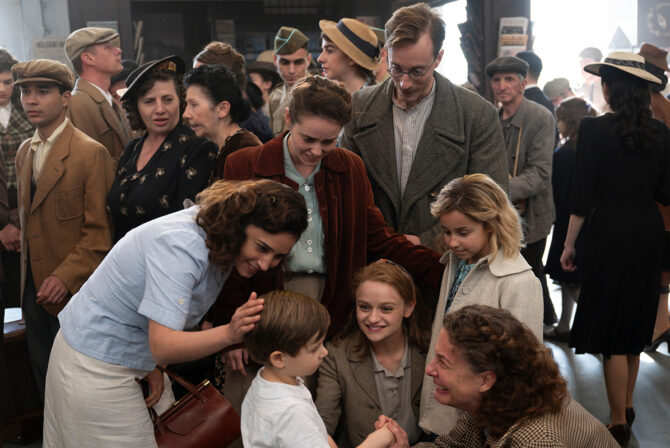My grandmother’s kugel recipe came to me as a gift from the beyond.
Eight years ago, just before the High Holidays, my father received a message from a cousin. In the process of cleaning out her mother’s house, she had found a stack of yellowed recipe cards in a drawer. They were labeled with my grandmother’s name and so, she wondered, did my father want them?
In many families, recipes like this would have long ago been taught to any interested family member. Daughters and daughters-in-law would have traded cooking tips and even spent the days before a holiday side-by-side with the generation above them, chopping and measuring and sifting together. Though a recipe might always be referred to by its originator—“Aunt Hannah’s strudel”—it would travel both geographically and across generations. In the case of my in-laws, for instance, everyone makes Aunt Susan’s brisket, Nana’s sponge cake, and Uncle Fred’s fried salami. The fact that Nana passed away many years ago is meaningless; the sponge cake is hers. There are still family members who watched her make it in her own kitchen.
In my family, though, things are different. My grandmother died nearly 60 years ago, before her daughter had finished high school and her son had become a bar mitzvah. Even if that daughter had learned to make her mother’s recipes, she herself died young, without having had children and before the knowledge could be passed on. My grandfather remarried a woman who did not cook. My grandmother’s culinary legacy was, it would seem, entirely lost until those recipe cards were discovered decades later and clear across the continent from the kitchen where my grandmother last cooked a meal.
In the decades after my grandmother’s death, my father led a full life: school, marriage, travel, career, children, grandchildren. Though my parents named me for my grandmother, there was so little about her that my father could share: no heirlooms and just a few photos. When my father received the recipe cards, he scanned them and sent me the images. It is no surprise to me that, nearly immediately, my mother did exactly what I did. On opposite sides of the country, we both began to make my grandmother’s food. Perhaps we were both looking, through this simple act, for a connection to the woman neither of us had met.
I got to work. In the 1950s, when these recipe instructions were last followed, there was no such thing as lactose intolerance, and so my first job was to find close substitutes for the ingredients I couldn’t eat. Vegan cream cheese and soy milk procured, I took out the metal mixing bowl I had picked because it was just like my mother’s, and I began to follow my grandmother’s directions for apricot noodle pudding.
Lokshen kugel—aka noodle pudding—is a controversial thing altogether. Ask two Jews to pronounce it, and you’ll hear “cook-gull” and “coooo-gill.” Ask three Jews what goes in kugel, and you’ll get six answers at minimum, ranging from cottage cheese and mozzarella to raisins and cinnamon to apples or peaches. The kugel of my childhood relied on fruit and cottage cheese. The kugel of my in-laws is a simple concoction of noodles and sweet cheese topped with cornflakes.
This kugel, from my grandmother, is the most exquisite one I’ve ever tasted.
The recipe is similar to others I’ve seen but with some surprising ingredients, most particularly apricot nectar, which I find most readily available in the Hispanic section of the grocery store. The quantity it calls for is just one-half ounce different from the standard volume of the cans in the store. Where did my grandmother go to get apricot nectar? Was this a commonly stocked product in kosher groceries on the east coast in the 1950s? What else would they do with it? What’s with the missing half-ounce? I picture my grandmother, her children at junior high and high school like mine are today, going to the market in the red leather jacket she wears in my father’s favorite photos of her. What else did she buy?
Did she, as her cousins have told me, sing to herself as she walked back through her door, just as I do?
I’ll never know the answers to any of those questions, but I do know this: My mother told me that the taste of this kugel brought tears to my father’s eyes. He remembered it.
This kugel is now known as “Grandma Dorothy’s Kugel” by my daughters. One of them counts it among her favorite foods and so, when she became a bat mitzvah last year, we shared the recipe with the caterers so that it would appear on the menu. In that way, more than half a century after her death, my grandmother had a presence at the bat mitzvah celebration of her great-granddaughter.
She is with us, too, at the High Holidays, when her kugel’s place at our Rosh Hashanah lunch table is now expected. The New Year begins with a taste of family, an inheritance that cannot be taken away. As prescribed, it is sweet, it brings life full circle, and, of course, it is delicious.







